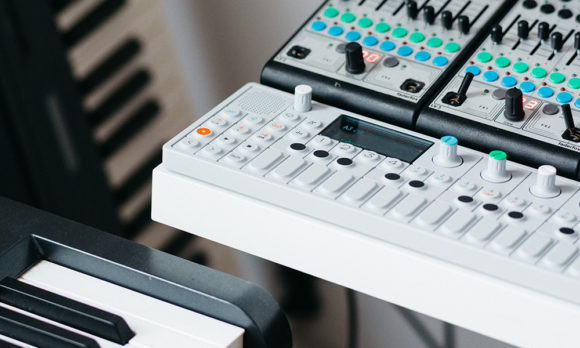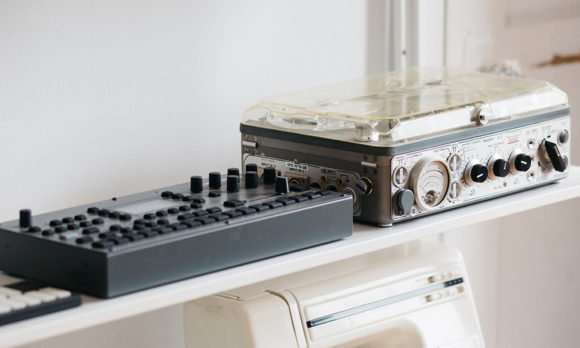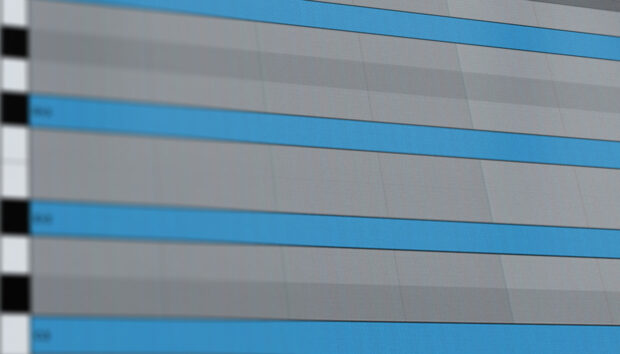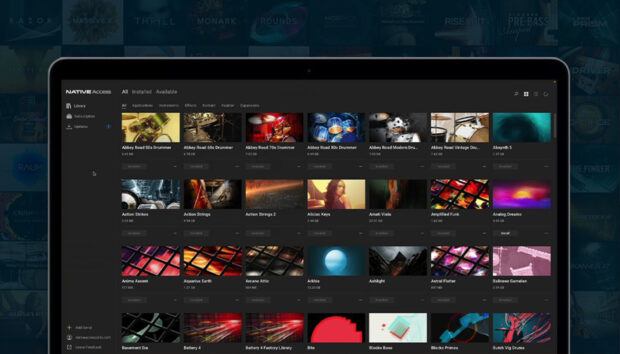
Jesse Osborne-Lanthier’s musical journey began with a very typical route. Starting with the drums at age 16, playing with metal bands, making the jump to IDM, through breakcore, to ambient, then swapping video games for hours on Fruity Loops and Jeskola Buzz Generator. In a story as old as time, a producer is born! But Jesse’s actual music, on the other hand, is nothing but typical. Case in point: 2016’s A.T.L.H.F.V.A.M.L.T.H.A.T.U. for Halcyon Veil, which weaves together soundscapes of booming explosions, ambient noise and the complex oscillator programming. The album challenges us to stretch our definition of what music and sound-design can be when the right person ties the two together. It’s like being in a sound-design firefight at a rave, and nobody’s remembered to switch off the PA system… or the Commodore 64.
This experimental, abstract material may be the result of environment. As well as being a key player on Montreal’s music scene, Osborne-Lanthier’s time in Paris and Berlin, as well as his experience in visual arts, graphic design, label curation, show promotion and patch design (his ABSYNTH 2049 presets are due out in the near future) make him a diverse creator whose next moves are hard to predict. “I’m also producing a demented rock record for Femminielli, working on some documentary music, and then some video game music,” says Jesse from his base in Montreal. “There’s a lot of first times there for me.”
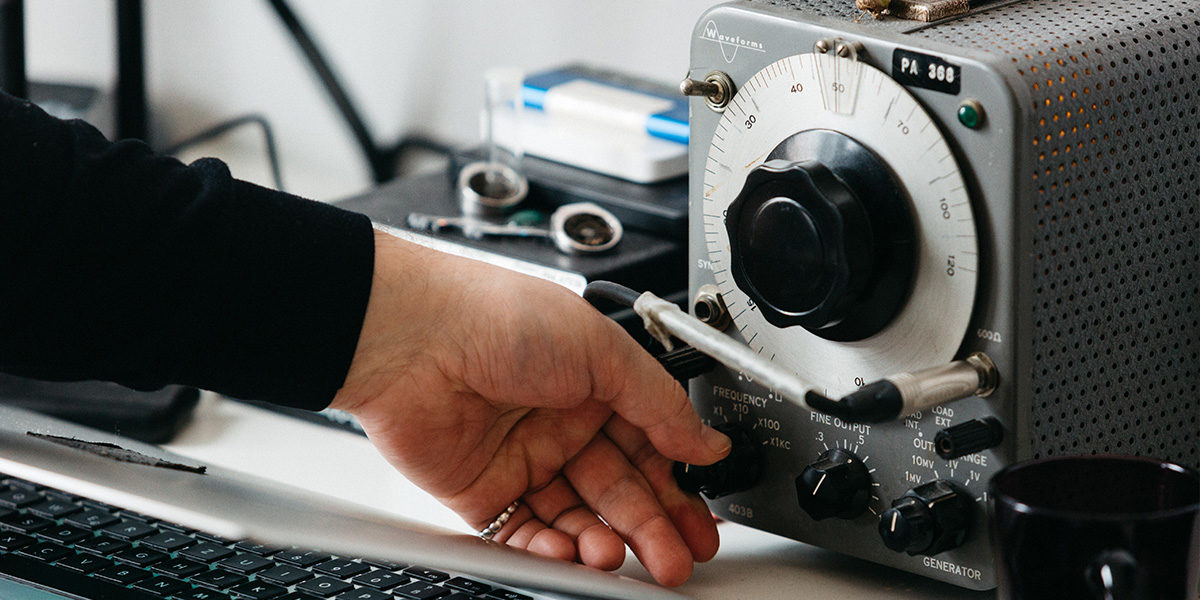
I made the mistake of first listening to A.T.L.H.F.V.A.M.L.T.H.A.T.U. through my phone speaker. When I heard it on a proper system, it made much more sense. Do you worry about people missing the point like this?
Not really. I think a lot of the people who listen to my music are either peers or close friends; people who I produce with, collaborate with… fans of experimental electronic music, they know what to expect.
I’m also really interested in sound in headphones. Personally, I make electronic music on-the-go – in airplanes, in various studios – so It makes sense to me. I’d never really listen to music on iPhone speakers.
We all know how to design sounds, but that album is more about controlled, sequenced destruction. It sounds like it took hours and hours to get everything into place.
Most of the album was actually recorded super-fast. A lot of my music and sound design practice is based on highlighting randomly-generated sound – the collisions that occur when certain parameters can be changed in one click and the errors and accidents that manifest when that happens. I isolate them, repeat them and sculpt material out of them.
I find that those are often the most interesting sounds, and once you put intention behind them, you can make them sound extremely weird, make them stand out or use them as core structure. For that album, I used the DAW without any sequencer, without any BPM – with looser timings. When you do that, music sounds strange and extreme, super ‘overly-sound-designed’ because there’s no one aspect that holds it together, audio becomes elastic.
Were you mostly working with rendered audio, or was there room for MIDI instruments as well?
There always is! A lot of the sounds came out of old recordings from when I had analogue gear. I also used MIDI instruments and controllers, of course… a bunch of MIDI tweaking, a bunch of automation, a bunch of live tweaking. Both aspects are there, but the point was for the DAWs not to dictate too much where the music was going. And then there’s a bunch of reel to reel processes that give the entire album a kinda wobbly feel.
You’ve been working on a bunch of ABSYNTH presets recently. Is ABSYNTH something of a weapon of choice for you?
Absynth is pretty much on every track I’ve ever made.
I never really clicked with ABSYNTH myself…
It can sound really unnatural! Like it just sounds off or corny at times, but for me, the Mutate function is just incredible – it often solves writer’s block; you’ll be in a rut, and then you just smash the Random button, and more often than not, all of a sudden you have glitches and interesting little things that you can work with.
Another thing that drove me to it originally was the computer I had. Running [then] new stuff like Razor was really hard at the time, but Absynth was operating within my CPU capacity, and so I learned to use it in a power-user way: I’d edit everything on it and make the sound as beefy as something someone would get from using Razor, but always retained that strange Absynth edge.
There’s a strong visual and graphic element to what you do as well – have you always been into visual design too?
I was always into art growing up; I thought I was going to be a visual artist first but, ended up in music because of the way things happen. I’ve always retained some kind of visual aspect in my music. I’ve been making album art, flyers and logos on the side for years.
As far as graphic design itself, it wasn’t until two years ago that I seriously started refining my graphics and becoming more engaged with design as a long-term, more concrete practice.
Do you think the internet’s making it easier to be multi-disciplinary like this?
Maybe it’s a Millennial thing. I never had enough money to be able to take classes, and my parents would never have paid for me to go to university – I just had to learn from the internet, forums and tutorials and such. The internet is definitely responsible for me learning synthesis, composition… everything really.
I approach music and visuals in a very different way though. In terms of technicality, I can’t make graphics the way I make music – that’s impossible. I can’t generate randomness, for example, and so I keep the two separate in that sense, but I try to always have a cohesive thread running through all of my work. I think I’m good at gelling the visuals and the music together, partly because of my music background and my affinity for music branding and packaging.
When it comes to the music, what other software can you not live without?
I use a wide variety of DAWs, from FL Studio, to Logic and Ableton. I use Gleetchlab and a lot of little weird gadgets that aren’t really on the market anymore.
Then there’s Reaktor which I open it up standalone every once in a while and just record the output for like three hours! I’ll take an instrument, change the sound bank, put my own sounds into it and play with it until I find something I click with. It’s this sporadic thing that happens. I often break that recording into little bits and feed it back into Reaktor again, and that can be where the magic moments happen for me.
I use Kontakt every day on production – and I’ve been using it more intensely with Femminielli for our upcoming album, which we’ve been working for the better part of this year – it’s on every track I think. We used to record guitars, harpsichords and other instruments, but now if we want a guitar sound, we just make it with Kontakt. It’s so much more interesting to me, personally. For me, it replaces the act of trying to figure out how to make the instrument sound unusual.
We’re at this very strange point in creative history where being a sound designer and making instruments for other people to use is a job in itself, and the person using those instruments might not have as much input as the sound designer, but they still get the credit.
It keeps it interesting, I guess. There was a time just a few years ago where everyone was wanting to make their own sounds from scratch using raw oscillators and filters – people wanting to make all the patches and build their own outboard studios or whatnot… but I’ll just use anything that I can get my hands on, and I like this preset era of music.
Really, I probably could listen to an album made entirely out of presets, if the concept was, “My 20 favourite Reaktor presets” or something! If someone recorded them and put them on a record, I think I could listen to it. Blatantly out-of-the-box, no shiny processes.
Would you feel strange if you suddenly heard someone using sounds you’d made like that?
No, not at all. I’ve done sample banks for people – just individuals who tell me they like what I make and that they want a bank of ‘my kicks’ or something, and I’ll make it for them. I’m flattered if people use my sounds, and I also use other people’s sounds, so no, it wouldn’t bother me at all.








